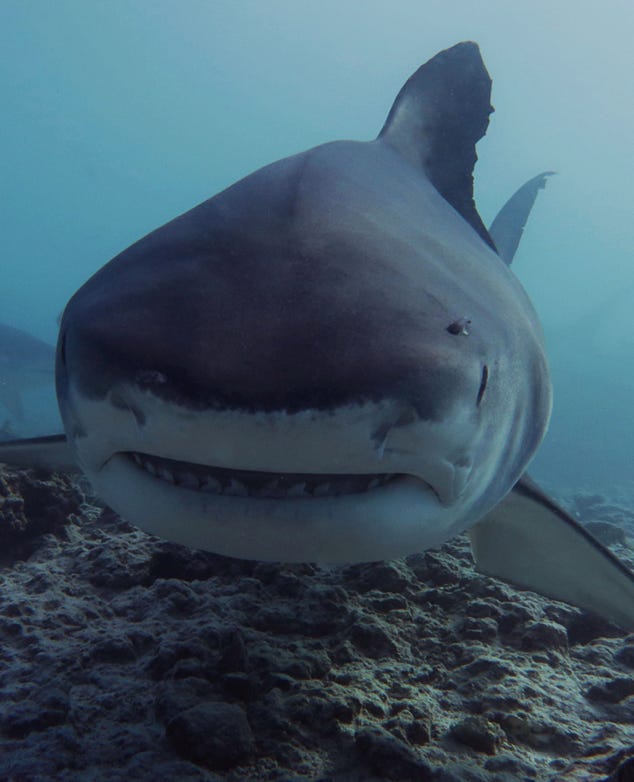TIGER SHARK DIVE
Since the construction of the Harbour and the fish market in 2004, the islanders have been discarding their daily fish waste close by the waters of the harbour. This attracts large numbers of marine life including many tiger sharks which scavenge the scraps left from the fishermen.
There are over 200 individual sharks recorded and this number is growing. This is the most popular site among scuba divers who visit the island. This is mainly a stationary dive at a shallow depth of approximately 12 meters on a sandy drop off making it accessible to all levels of certified divers.
While we consider ourselves fortunate to witness the captivating presence of tiger sharks, we strive to minimize our interference and let nature unfold as naturally as possible.
Fuvahmulah island’s rich coral life supports diverse marine species, including sharks that find cleaning stations among cleaner wrasses. Abundant prey species attract a variety of predators, making it an ideal location for observing elusive species like Thresher, yellow fin tuna … all year around.
Rich coral life comes along with a diversity of marine species that are interlinked to one another. The numerous cleaner wrasses even at depths of 40m ensures that pelagic species such as Thresher Sharks, Tiger Sharks, Hammerhead Sharks and Silvertip Sharks along with many others have many spots where they can stop to get cleaned. This combined with the diversity and abundance of available prey species provide divers the opportunity to see a huge variety of predatory and pelagic species that are drawn right along the reef. Hence, the abundant observation of normally elusive species, like Threshers, Yellowfin Tuna, Great Barracuda, Giant Grouper, Wahoo and sailfish persist all throughout the year.
MARINE LIFE
Aside from the mega fauna that the island is famous for, the reef provides an ideal habitat for plethora of smaller fish, a variety of species of Parrot Fish, Trigger Fish, Hawkfish, Trevally, Emperor and Groupers can all be seen with a single glance swimming to the rhythm of the current among the rich and colourful hard corals. Huge schools of Barracuda, Skipjack Tuna, various Fusiliers, Milkfish and Mackerel Scad could be observed throughout the year. The reef also features Hawksbill Turtles, Moray Eels, Torpedo Rays, White Tip Reef Sharks.
During some months of the year, when plankton and other microbial life blooms drawing larger fish closer to the island reef. April to May every year, Oceanic Mantas and Whale Sharks are observed around the island.
There are also marine mammals that can be observed on the surface such as pods of Spinner Dolphins, Melonhead Whales, Pilot Whales and sometimes rarely seen species like the Cuvier’s Beaked Whale, the deepest diving marine mammal.


